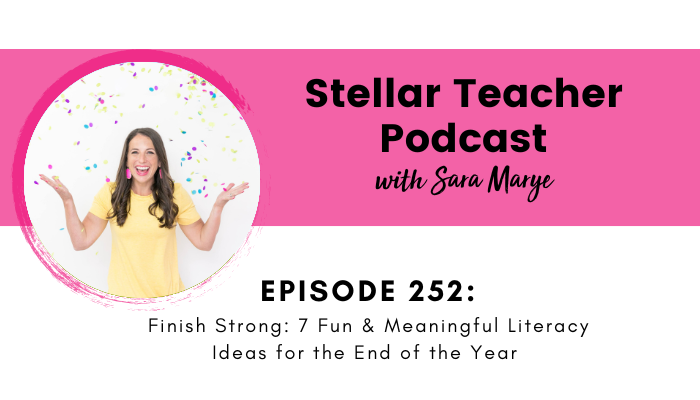
Click play below to listen to fun and meaningful literacy ideas for the end of the school year.
As the final weeks of school approach, it can be tempting to hit cruise control—but the end of the year is actually the perfect time to bring some fresh energy into your literacy block. In this episode, I’m sharing seven fun, low-prep literacy ideas that will help you keep students engaged and learning all the way to the last day of school. Whether you’re running on caffeine, countdown chains, or sheer willpower, I’ve got you covered.
These literacy ideas are practical, meaningful, and designed to support the skills your students have been building all year long—without adding more stress to your plate. From word ladders and genre studies to book clubs and research projects, you’ll find easy-to-implement activities that blend fun with academic purpose. These strategies aren’t just engaging—they’re also flexible, so you can adapt them to fit whatever time or energy you have left as the year winds down.
So if you’re wondering how to make the most of May, this episode is your game plan. These end-of-year literacy ideas will help you maintain momentum, create lasting memories with your students, and finish the year feeling confident and proud of the learning still happening in your classroom.
In this episode on literacy ideas for the end of the school year, I share:
- Simple, low-prep literacy ideas that keep students engaged and learning all the way through the last day of school
- How to bring structure and joy to your classroom with end-of-year book clubs, author studies, and genre deep dives
- A fresh take on independent reading to help students end the year strong
- How simple literacy routines like sentence writing and word study can still pack an academic punch
- Ways to turn classroom time into meaningful learning with student-led research projects
- Creative and flexible literacy ideas that make planning easy and keep your students focused when summer is just around the corner
Episode Resources:
TPT Links:
- 40 Word Ladders (TPT)
- Sentence Writing Routine (TPT)
- Sentence Writing Routine Freebie
- Seasonal Sentence Writing Resource (TPT)
If you’re interested in becoming a member and getting access to our entire Literacy Resource Library, you can learn more at stellarteacher.com/join.
Stellar Literacy Collective Links for Members (sign in before clicking on links):
- Word Ladders
- Book Clubs
- Author Study
- Genre Study
- Sentence Writing Routine
- Seasonal Sentence Writing Resource
- Nonfiction Science Articles for Possible Research Projects
More Resources:
- Join The Stellar Literacy Collective
- Sign up for my Private Podcast: Confident Writer Systems Series
- Sign up for my FREE Revision Made Easy email series
- If you’re enjoying this podcast, please leave a review on Apple Podcasts!
Related Episodes and Blog Posts:
- Episode 133, Keep Your Students Engaged in Reading Until the Very Last Day of School: 7 Tips for You!
- Episode 113, Seasonal Spotlight: Establish Student Independence With Book Clubs
- Episode 78, Literacy Routines for an Engaging End of the Year
- Hosting an Author Study in the Classroom
Connect with me:
- Join my newsletter
- Shop my TPT store here
- Subscribe to our YouTube channel
- Instagram: @thestellarteachercompany
- Facebook: The Stellar Teacher Company
More About Stellar Teacher Podcast:
Welcome to the Stellar Teacher Podcast! We believe teaching literacy is a skill. It takes a lot of time, practice, and effort to be good at it. This podcast will show you how to level up your literacy instruction and make a massive impact on your students, all while having a little fun!
Your host, Sara Marye, is a literacy specialist passionate about helping elementary teachers around the world pass on their love of reading to their students. She has over a decade of experience working as a classroom teacher and school administrator. Sara has made it her mission to create high-quality, no-fluff resources and lesson ideas that are both meaningful and engaging for young readers.
Each week, Sara and her guests will share their knowledge, tips, and tricks so that you can feel confident in your ability to transform your students into life-long readers.
Tune in on your favorite podcast platform: Apple, Google, Amazon, Spotify, Castbox, and more! If you’re loving this podcast, please rate, review, and follow!
Podcast (stellar-teacher-podcast): Play in new window | Download
Hey friend, and welcome back to The Stellar Teacher Podcast. As the school year wraps up and you’re getting ready to enter the home stretch, if I had to guess, your students are probably starting to count down the days—and more than likely, you are too.
But here’s the thing: just because it’s the end of the year doesn’t mean the learning has to end. I know that once state testing is over, it can be really tempting to put on movies, extend recess, and fill your days with more of those fluffy activities. That was definitely the temptation I felt when I was in the classroom, and I absolutely did a lot of those things. But there are some really easy, no-prep or low-prep activities you can do with your students this time of year that will keep them engaged and keep the learning going up until the very last day—which I know is something you want.
So today’s episode is what I’m calling an end-of-year pep talk meets practical strategy session. I’m sharing seven really fun and engaging literacy activities that I promise will keep your students learning until the very last day. There is zero fluff and lots of academic benefit. So whether you’re running simply on caffeine, countdown chains, or sheer willpower right now, this episode is for you. Let’s go ahead and dive in.
The first activity is something that is really easy to implement, still really effective, and pretty flexible—and that is simply providing your students with more word study activities. If you haven’t already been regularly incorporating word study throughout the year, the end of the year is a great time to start. And if you have been consistent with word study, this is a great opportunity to give your students a little more time to practice and maybe make some of the activities feel a bit more fun and engaging. I’ll give you some examples.
One of my favorite word study activities is word ladders. Students really love them because they feel more like a puzzle or a fun challenge rather than an assignment. And they’re still incredibly effective when it comes to strengthening students’ vocabulary, morphological awareness, and spelling.
Here’s a quick example of how a word ladder works. You might start with the word view and then give students a clue, like “Add a prefix that means again to make a word that means to look again.” The answer would be review. So they would write review on their ladder. Then the next clue might be, “Change the prefix to one that means before to make a word that means to look in advance.” The answer would be preview. Each word builds off the last one, so students are practicing using prefixes, suffixes, and base words as they work their way up the top of the ladder.
This is a great way to keep students engaged and thinking deeply about words, but it doesn’t feel like a boring worksheet. You could easily do this whole group and turn it into a game, or you could take the easy route and give your students a worksheet that has the word ladder clues listed out for them. They could do this independently or with a partner—which is something I always tried to incorporate more of at the end of the year.
We actually have a set of 40 differentiated word ladders that focus on common prefixes and suffixes. You could give your students one ladder each day until the end of the year. Like I said, it’s a fun way to review important word study skills. It takes zero prep on your part and is just an easy piece of your day to plan.
Our word ladders are included inside The Stellar Literacy Collective, so if you’re a member, log in and download them today. If you’re not a member, I’ll link to them in our TPT store so that if you’re interested in grabbing these for the final weeks of school, you can.
Now, word ladders aren’t the only word study activity you can do. You could also plan things like word sorts, word building activities, or even have your students practice with word matrices. I think during the year, it can feel like there’s never quite enough time—time for students to play with words. So the end of the year is really the perfect opportunity to slow down and give them more time to explore, practice, and build confidence with your word study.
The next literacy activity I love doing more of at the end of the year is book clubs—specifically, self-selected book clubs. If you haven’t done a book club before, the end of the year is a great time to start. Book clubs help build reading stamina, comprehension, collaboration, and I think one of the biggest benefits is that they can instill a love or curiosity for reading that can carry over into summer, which we know is really important.
Now hear me out—I know some teachers avoid doing book clubs because they seem like a lot to organize and manage. But here’s the thing: it’s the end of the year. We can remove the pressure and let book clubs feel fun for students.
Here’s what I recommend if you’re interested in trying book clubs for the last few weeks of school. Let your students nominate a few books they’d like to read. Just keep in mind that every student needs to have access to a copy, whether that’s a physical version, an audiobook, or even a read-aloud version on YouTube. Once you’ve selected the books, reveal the final book club options, then let your students choose which club they want to be part of.
And yes, it is totally okay if you have that group of girls in your class who all want to be in the same club—because, let’s be honest, that’s exactly how book clubs work in real life. If a large group of friends all want to read the same book, let them do it. Then simply let the book clubs run for two to three weeks. Give your students a deadline, let them know how much time they have, and then let them enjoy reading and discussing with their friends.
When your students are meeting, they can take turns reading the text out loud, which also buys you a little time to pack up your library or take down your bulletin boards. Reading out loud together can also help build their fluency and ensure all students are understanding the text.
Give your students a simple response sheet and a book club agenda to guide their discussion. It doesn’t need to be complicated. You don’t need to assign roles or stick to a strict reading schedule. Just let students meet, read together, and enjoy discussing a story. We always did book clubs at the end of the year, and it was such a fun way for students to collaboratively engage in reading in a much more relaxed and authentic way.
Okay, another really fun whole-class activity you can do at the end of the year is an author study. I used to do these all the time when I was in the classroom, and my students loved them. Plus, I think it gives you a great excuse to do more read-alouds with your students—which is something both teachers and students love, especially at this time of year.
Here’s how an author study works: pick an author—any author you or your students are interested in—then head to your local library or school library and grab as many books as you can by that author. Spend the week reading those books aloud. Depending on how many books you gather, you could read one, two, or even three each day.
You can keep your author study pretty informal: just read books by the same author and notice themes, characters, writing styles, and illustration choices. Talk about those things with your students. That’s the simplest way to do it.
Or, if you want to take it up a notch, there are things you can do to make your author study more structured. You could compare and contrast characters or themes across different texts by the same author. You could have students mimic the author’s style and write their own story that feels like it belongs in the author’s collection. You could have your students write a letter to the author sharing which book they enjoyed the most and why.
Or—this is something my students always enjoyed—you could incorporate an art project. This is especially great at the end of the year because it can extend over several days, giving you time to take care of those important end-of-year tasks. You could have your students create a piece of art inspired by the illustrations in the books.
When I taught second grade, we always did an Eric Carle author study, and that would probably be a little too young for fourth grade, but we ended up doing a torn paper art project in the style of his illustrations, and my students absolutely loved it. So again, think about the author or illustrator that you are studying and see if there’s an art project you could use to have your students really mimic or be inspired by the books they’re reading and create a fun art project at the end of the year.
Now, again, if you’re a member of The Stellar Literacy Collective, we just released three ready-to-go author studies featuring Jory John, Janell Cannon, and Matt de la Peña. You’ll still, of course, need to get the books, but we’ve done a lot of the heavy lifting and planning for you. So if you’re in SLC, go check some of those out and use them to help you get through to the end of the year.
Here’s a quick tip: if you want to study a particular author but you can’t find the physical books, check out YouTube. You can usually find most titles being read aloud—oftentimes by the author—which makes it even more engaging for students.
All right, moving right along here—my next suggestion is very similar to an author study, but with a slightly different focus. I want you to consider doing a genre study at the end of the year. Just like with an author study, you can pick a genre to focus on for the week, then gather a variety of texts that fall into that genre. What makes this really fun is that you can mix and match text types. Maybe you have a novel you want to use as your main read-aloud, but you can also pull in picture books, short texts, or passages that fall into the same genre.
Doing a genre study can really help build genre awareness and introduce students to new reading preferences they may not have discovered yet. And again, as we get ready to send our students off for the summer, we want them to feel inspired when it comes to reading. If we can expose them to genres they haven’t explored before, this could be a great way to get them excited about reading over the summer.
Here are a few ideas of what your students could do during a genre study. They could create a genre anchor chart as a class with defining features, common themes, and examples of well-known titles for that genre. You could also have students compare two texts within the same genre and think about: What do these texts have in common? What makes them unique? How do they still fall into this specific genre? What attributes do we see? You could have students make book recommendations by writing a short blurb or creating posters that convince classmates to read a book in a particular genre. They could also keep a genre reflection journal. At the end of the week, have your students reflect on whether or not they enjoyed reading that genre and why.
Both genre and author studies are perfect activities to do right before summer break. Like I said, they really help expand students’ exposure to different types of texts and can spark an interest in exploring new genres or authors over the summer—which we know is something we want for our students.
And again, if you’re a member of The Stellar Literacy Collective, we’ve just released three ready-to-go genre studies on historical fiction, fantasy, and biography. Each one includes a variety of texts, specific objectives and discussion points, as well as a variety of student activities. You can make them as formal or relaxed as you’d like. So if you’re looking to make your end-of-year planning super easy, go download those resources and plug them into your final week plans.
Okay, so activity number five—this one might not come as a surprise to you, and hopefully (fingers crossed) it’s something you’re already doing with your students. A really great end-of-year activity is to incorporate our sentence writing routine. Again, hopefully, you’ve already been doing this throughout the year, and if so, you’re probably thinking, “Cool, I’m already doing that—I’ll just carry it on through the end of the year.” But if sentence writing hasn’t been a daily focus for you, now is the perfect time to start.
If you need help getting a routine up and running, we have a freebie for you. Just go to stellarteacher.com/sentences and grab our free sentence writing routine to get started.
Now I want to talk a little bit about why this is a great thing to focus on at the end of the year. First of all, we all know that sentence writing is ultimately necessary for students to be able to write solid paragraphs or essays. And we also know that in upper elementary, there are a lot of students who still really struggle with it. So if you can commit to doing daily sentence writing practice from now until the end of the year, you are really going to be giving your students a gift that will make next year so much easier for them.
You can use our routine as it is, because it includes one sentence writing activity per day, and each one focuses on a different sentence skill. One day, they are finding and fixing a fragment. The next day, they are unscrambling sentences. The following day, they might be combining two short sentences or expanding a sentence with details. You can use that routine as is. But if you have extra time, here is my end-of-year challenge for you: try to increase the frequency. Instead of doing just one sentence writing activity a day, try doing two or three sentence writing tasks each day. Or you could go all in and complete an entire weekly routine in a single day. That means, in one day, your students are completing five sentence-level writing activities, which gives them targeted practice with a variety of sentence-level skills—and ultimately, that will just make them stronger writers in the future.
Like I said, we all know that sentence writing is the foundation for all other writing, but it’s often something we don’t make enough time for. And I know, especially as we are wrapping up state testing season, it can feel like we need to prioritize helping our students get prepared for whatever our end-of-year state test is. If it’s a constructed response or writing a five-paragraph essay, we focus so much on getting them ready for that test. But once that test is behind you, let’s get back to the basics. Let’s use our time to really help our students develop their writing skills. Focusing on sentence-level writing now is going to set your students up for success—and their next-year teacher is going to thank you.
Now, because it’s the end of the year, we also want to think through how we can make sentence writing just a little bit more fun. So here are a few ideas. If you’ve been using our routine all year and you want to make it just a little more engaging and fun for your students, first, let them work in partners. Anytime you let students work with a friend, it’s going to feel more fun for them. Another idea is to have your students bring in a personal photo or an object that means something to them and use it as the focus for your daily sentence writing practice. Once you download our routine, you’ll see how you can easily use pictures as prompts—that’s basically what our entire routine is based on. So rather than using our pictures, you could have your students bring in their own personal photos and use those as the basis for the routine.
Another option is to use our seasonal sentence writing resource, which is available inside The Stellar Literacy Collective. It’s also available on TPT, so we’ll link to both in the show notes. We’ve taken our sentence writing routine and applied it to the seasons. So if you’re looking for some end-of-year or summer-themed fun for your students to write about, we’ve got that included in our seasonal sentence writing resource.
All right, this next idea is for those of you who like to operate with maybe a little less structure and a little more go-with-the-flow mentality—which I was never that type of teacher until we got to the end of the year. Once we were in those last two to three weeks, I was like, anything goes. You know, we just need to stay engaged and keep the students busy, safe, and on task so I can get the room packed up. So if you’re at that point, this might be something you want to consider incorporating.
This is something we did at the end of every year, and again, my students really enjoyed it. We always did an independent research project. Now, it was either independent, or I would let my students work with a partner or in a group of three. Some students chose to work independently, others chose partners—it was completely up to them. We let them choose a topic of their choice, or you could always tie it into a theme. If there was a theme you recently studied, or a unit your students particularly enjoyed this past year, maybe you could connect it back to that. Ultimately, it can be on whatever topic they’re interested in.
I think research projects at the end of the year can be a really great way to culminate all their learning. This can give your students a chance to practice so many skills. If they’re doing research, they’re going to have to apply things like reading comprehension, summarizing, note-taking, and writing. They also get an opportunity for choice—choosing the project they want to work on and how they want to display it—as well as ownership. Students can research something that genuinely interests them, like an animal, a historical figure, a science concept, or even a place they’d like to visit. Then, encourage students to figure out a way to present their findings to the class in a format that excites them. Maybe they want to do a poster, a written report, a trifold with a short presentation, a slideshow, or even a 3D model. Keep it simple and open-ended. The more open-ended it is, the easier it is for students to just take the project and run with it.
A really simple three-week structure you could follow is this: Week one, your students research and learn about their topic. Week two, they create their project. During this week, they take their findings and turn them into their report, poster, slideshow, or art project. Week three is for presentations. They practice presenting, answering questions, and preparing how they want to interact with or display their artifact—whatever that might be. You can even set a specific date for parents to come in and listen to presentations. We always did an open house, where students were spread around the perimeter of the classroom, and from 9 to 10 a.m., parents or other classrooms could walk around, see the projects, ask questions, and have students present.
Think about how impactful—and really how meaningful—this time could be at the end of the year if you spent three weeks with your students on an independent research project. It gives them a chance to culminate everything they’ve learned and do something fun and engaging. It also means way less planning for you. This could ultimately take up an hour and a half to two hours of your day if you structure it right. Your students will be engaged in something meaningful, and you’ll have time to finish grades and pack up your room—because we know that’s on your mind this time of year, too.
One of our members inside The Stellar Literacy Collective shared how last year, she used our nonfiction science articles on biomes to launch a mini research project. After her class read about biomes, her students were naturally curious and wanted to dig deeper. They grouped up and started researching specific biomes on their own, and she didn’t have to do much planning or prep. She just gave them space to be curious and explore something they were already excited about. It’s important to keep in mind that sometimes all it takes is a little curiosity and a little freedom for students to really learn more. So definitely consider bringing in some partner or independent research projects.
Okay, last one is our tried and true independent reading. Now, I will always be a big advocate for giving students plenty of time for independent reading, and I think the end of the year is a really great time to give students even more opportunities to read independently. But just like with everything I’ve shared, we want to keep it fun, we want to keep it simple, and we want to keep it enjoyable for our students.
Here are a few easy ways you can give independent reading a twist at the end of the year so it feels a little more exciting or enjoyable for students. First of all, you could let them choose to sit wherever they want in the classroom. You could take reading outside—if it’s a really nice day, let them spend 20 minutes reading outdoors. You could let them listen to audiobooks or watch YouTube videos of their favorite authors reading aloud. So, even though they’re not technically reading, they’re still comprehending and enjoying a story. You could also incorporate some buddy reading to make it a little more social.
We know that time spent reading is really valuable, so find out what your students need in order to enjoy independent reading—whether that’s reading with a friend, having a little more flexibility, or having options for how they want to consume the book. And then just try to make that happen.
And of course, a bonus benefit—while your students are reading, you can knock out some of those end-of-year tasks on your to-do list, which makes this a win-win.
Okay, so we know that the end of the year can be tough, right? But I want to remind you that it can also be one of the most enjoyable and meaningful months of the school year. Think about all the activities I just shared. These are the types of activities that your students are going to talk about when they go home: “We got to do a research project,” “We studied this author,” “I did buddy reading with my classmate.” These are the things students tend to remember.
With just a little bit of planning, you can really keep your students learning, engaged, and excited up until the very last day. I hope that today’s ideas reminded you that May can be fun, it can be meaningful, and it doesn’t have to be super stressful for you at all.
Of course, if you are looking for low-prep resources that support word study, book clubs, research projects, or sentence writing, be sure to check out the resources I mentioned in this episode in our TPT store. I’m going to link to them in the show notes, and they are also available inside The Stellar Literacy Collective. If you’re interested in becoming a member and getting access to our entire Literacy Resource Library, you can learn more at stellarteacher.com/join.
We want to help you get through to the end of the year, so definitely check us out. We love sharing tools that really make it easy for you to keep literacy learning going all year long.
And of course, I would love to know—which of these seven activities are you most excited to try? Send me a DM on Instagram or leave a review and share your favorite year-end idea. Thanks for tuning in. I’ll see you back here next week.

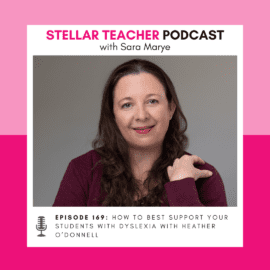
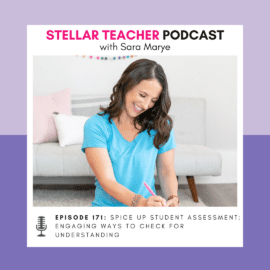
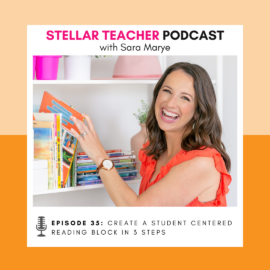
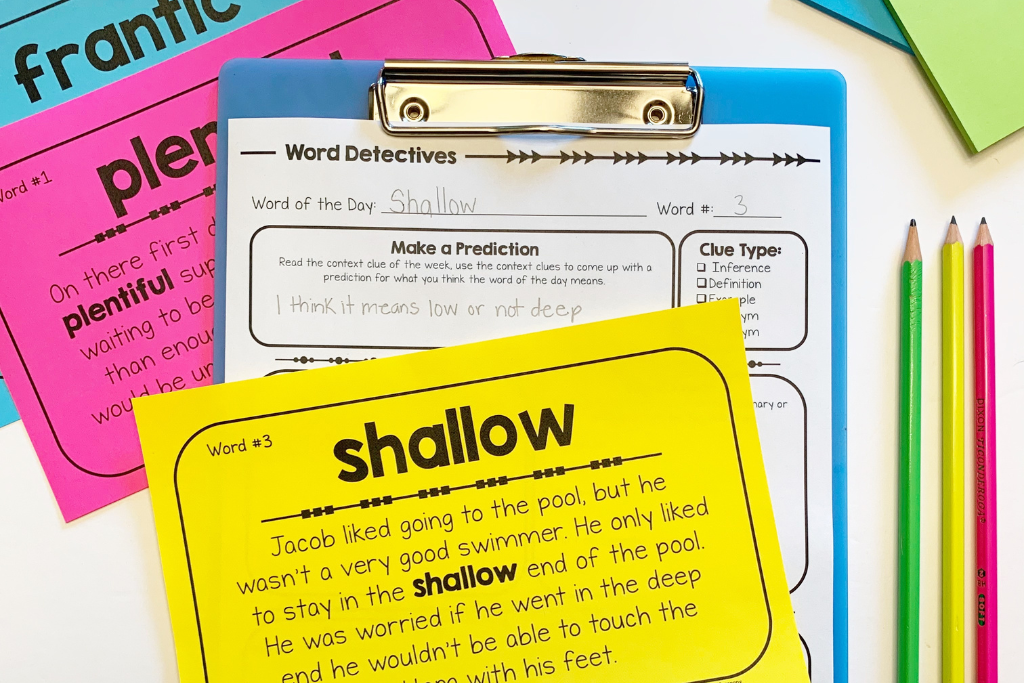

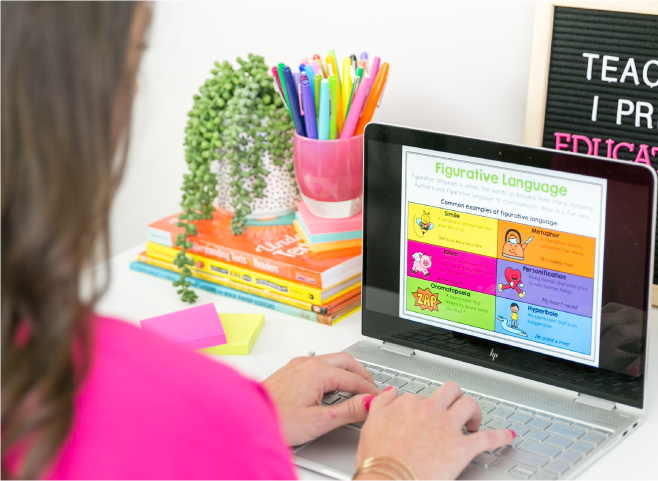
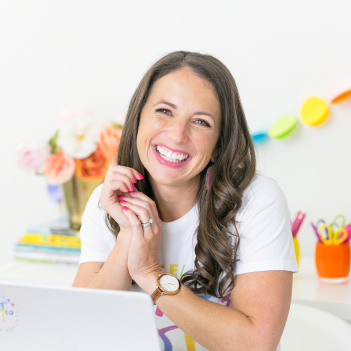
Leave a Comment
You must be logged in to post a comment.